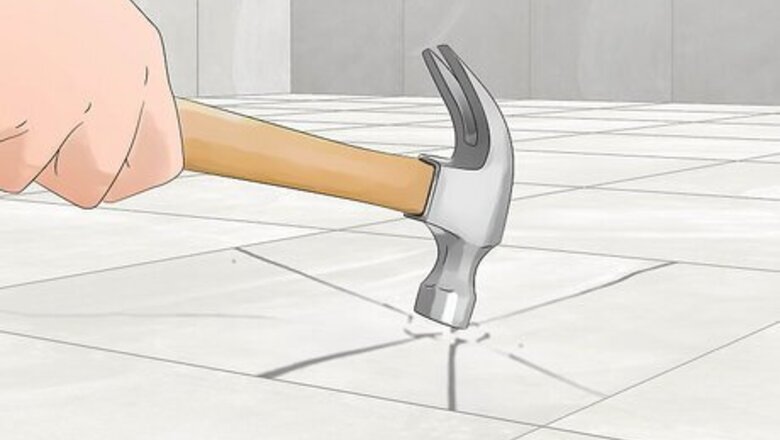
views
Removing All Floor Tiles
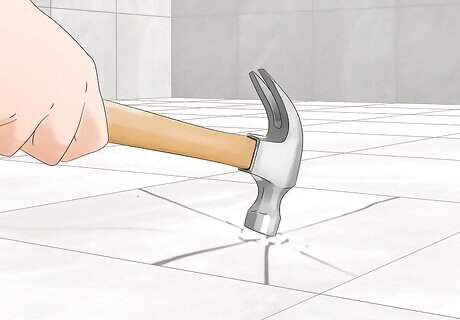
Break each tile up one at a time with a hammer. Pick a tile to start with. Grab a metal hammer, get on your knees, and start gently tapping the first tile. Increase the amount of force you’re using until the tile shatters and breaks up. Warning: Wear a respirator, work gloves, and protective eyewear. The dust from the tile can be toxic if you breathe it in.
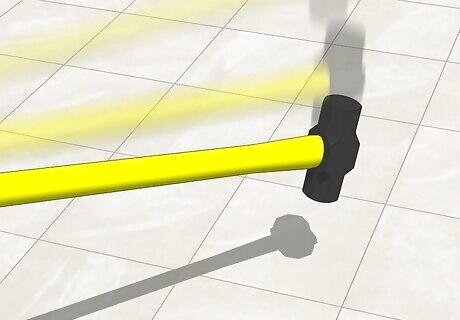
Use a sledgehammer instead if you’re removing the subfloor. If you already know that you’re going to be swapping out the plywood or cement board subfloor, don’t waste your energy on your knees swinging away with a hammer. Just use a sledgehammer and let the weight of the sledgehammer’s head do the work for you.
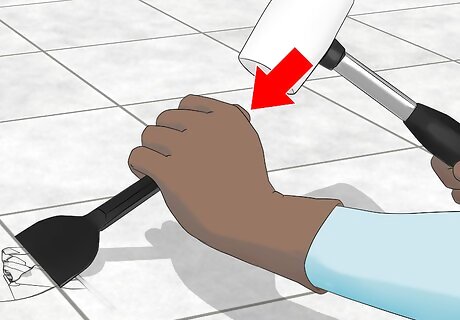
Use a chisel or pry bar to force up large chunks of tile. Once the tile is shattered, brush away any smaller chunks of tile with a gloved hand. For larger chunks around the edges of the grout, pry the tile up with a metal chisel or pry bar. Keep working to remove one tile at a time. Pro tip: The bigger the tile is, the more force you’ll need to lift the tile up. So, if you find yourself struggling, get a longer pry bar. The increased length will make the job easier.
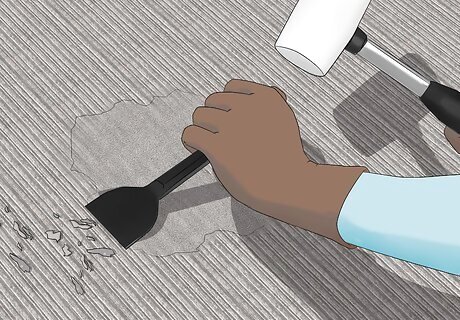
Scrape away the subfloor mortar and toss the tile chunks in the trash. Clean as you work by tossing any busted pieces in a contractor bag or rubber bin. Once you’ve removed the tiles, pry up the dried mortar using a chisel or pry bar. Insert the chisel or bar and tap the back of it with a mallet or hammer to scrape the material up. The mortar should come up in chunks. If it’s too dried out to come up in chunks with the chisel, use an angle grinder on the lowest setting to wear the mortar away. If the subfloor is wood, you may need to replace the wood when you’re done if it ends up damaged. If it’s concrete board, you should be able to reuse it. If you don’t throw the smaller chunks of tile away as you work, they’ll fly all over the place when you hammer.
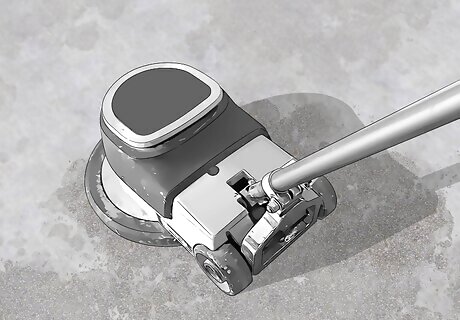
Rent a cement grinder if you have a lot of mortar to remove. It’s fine to manually remove the thinset mortar under the tiles by hand if you’re just redoing one smaller kitchen floor or a bathroom. However, if you’re tackling a bigger renovation, consider renting a cement grinder from a home improvement shop. These push-style handheld grinders are designed to make removing a ton of mortar easy. Do not use a cement grinder if you have a wood subfloor. It’s only safe to use if you have cement board or concrete slab flooring (and even then, use the lowest speed setting).
Removing Individual Tiles
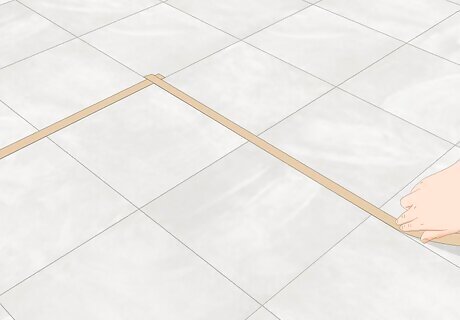
Tape off individual tiles if you don’t want to replace all of them. Home renovation expert and tile renovation company owner Art Fricke explains, “I'll take some masking tape or duct tape to mask off only the tile or tiles that I'm removing. So, what that does is when you start hammering on the tile to crack it apart whether it's ceramic or stone or porcelain or whatever and it won’t damage the tiles around it.” Simply smash the tiles you want to remove after taping them, then pry up the pieces and mortar before replacing them.
Removing Tiles without Breaking Them
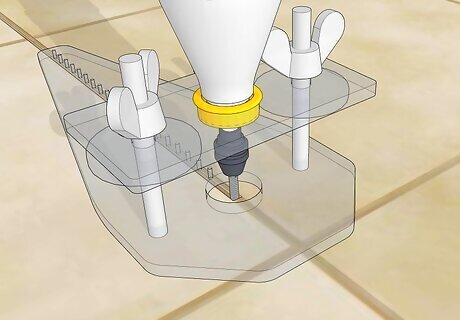
Use a rotary tool to remove the grout before prying tile out. A rotary tool with a small disc or pen attachment is a lot easier to use if you’re going the grout-removal path and not the hammer route. Instead of manually cutting the grout out with a utility knife, just plug the tool in and drag it along the line where the grout is to grind it out. If you don’t have a lot of grout to remove, feel free to use a utility knife to scrape the grout out by hand. The rotary tool won’t crack the tile, but it will scratch it if you drag it across the top, so be careful!
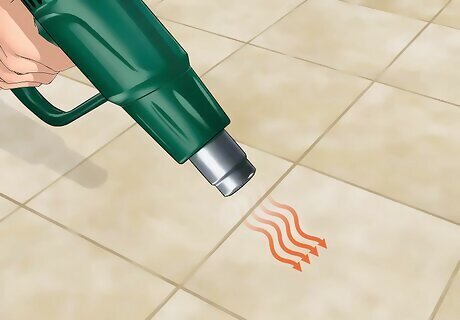
Apply high heat to pull up tiles that have been glued. If you tear up the first tile and find that you’ve got a gunky substance underneath (not dried, thinset mortar), the hammer and chisel method will be more trouble than it’s worth. Instead, use a heat gun or blowtorch to apply heavy heat to the surface of the tile. Once the grout is crispy, slide a chisel underneath the edge of the tile and gently pry it up. Be careful after you pry the tile up, as it will continue to retain heat for a few minutes. Either wear thick gloves or don’t touch the tile as you slide it away. This is also a great way to remove tiles in one piece if you plan on reusing them elsewhere.
Key Safety Reminders
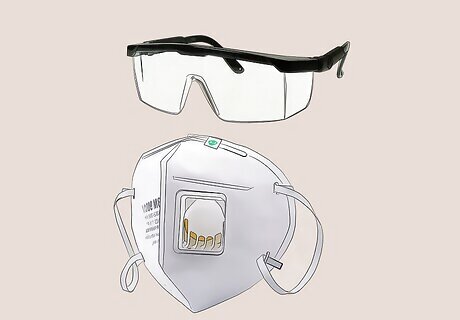
Wear protective eyewear and a respirator. Most floor tiles contain crystalline silica. This is the same material you find in glass, and it’s toxic to breathe it in. Wear a respirator with a canister rated for concrete, asbestos, and silica (this is the purple canister most of the time). Wear protective eyewear too, since flying glass shards can permanently blind you. Crystalline silica is a known carcinogen. It is linked to COPD, kidney disease, lung cancer, and autoimmune disease. A simple dust mask will not be enough here. Seriously, do not skip this!
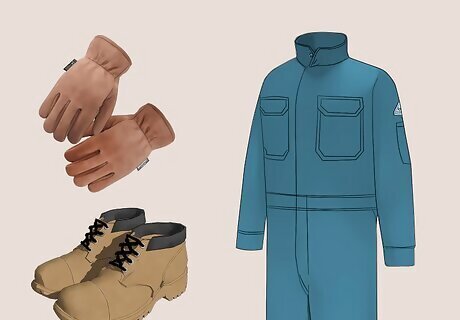
Wear leather gloves, long sleeves, and closed boots. Removing floor tile can cause injuries if you’re not properly protected, so put on leather work gloves, a long-sleeve shirt, and pants to protect your hands, arms, and legs from getting cut. The more protective gear you wear, the better.
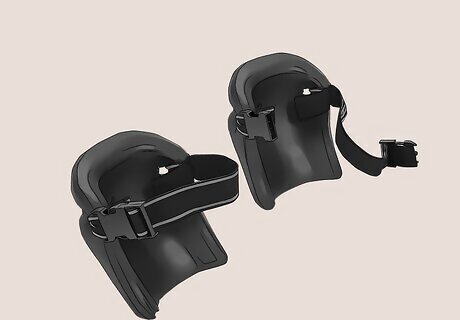
Get some knee pads to protect your knees. No matter how young and sprightly you are, tile removal is brutal on the knees. If you’re going to be removing more than a small bathroom’s-worth of tile, pick up some professional knee pads. It’ll make a world of difference.
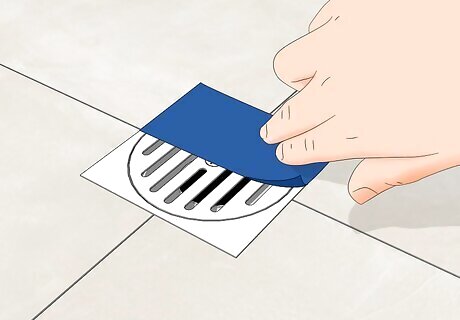
Plug any vents, toilet pipes, and sink drains. The silica you’re going to kick up by removing the tiles can get into your drains and vents. Keep that junk out of the air by taping over any vents with duct tape. Block any drains with plastic bags or tape, and close any dampeners.
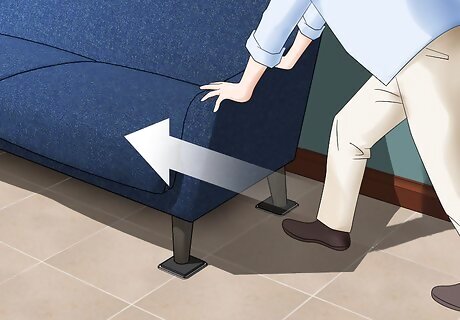
Remove any furniture in the room you’re working in. Crystalline silica dust will stick to fabric and wood, so take everything out of the room before you start. This includes trash cans, kitchen islands, drying racks, or toilet accessories.
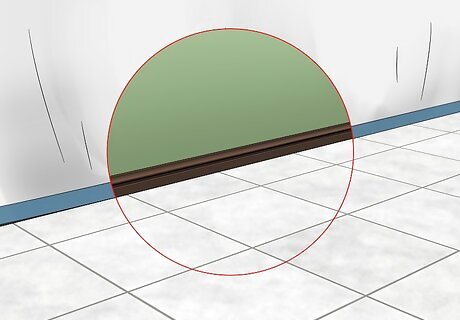
Cover surfaces that you don’t want to get dirty. This includes the bottom of walls, cabinets, and any other surface that’s close to the floor. Dust and pieces of tile will likely fly up while you’re working, so it’s best to cover necessary areas with plastic so that you have less cleanup once your project is finished.
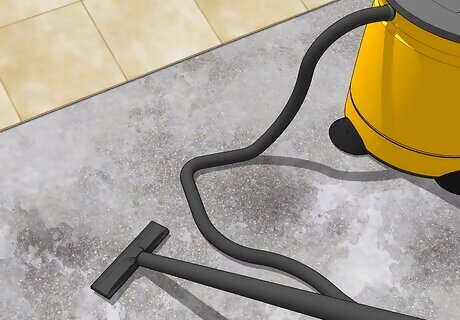
Vaccum as you work to keep the dust from getting intense. Use a Shop Vac or similar vacuum to pick up any extra pieces of tile, grout, or dust from the floor and surrounding surfaces. Go slowly when vacuuming to ensure you get everything.


















Comments
0 comment